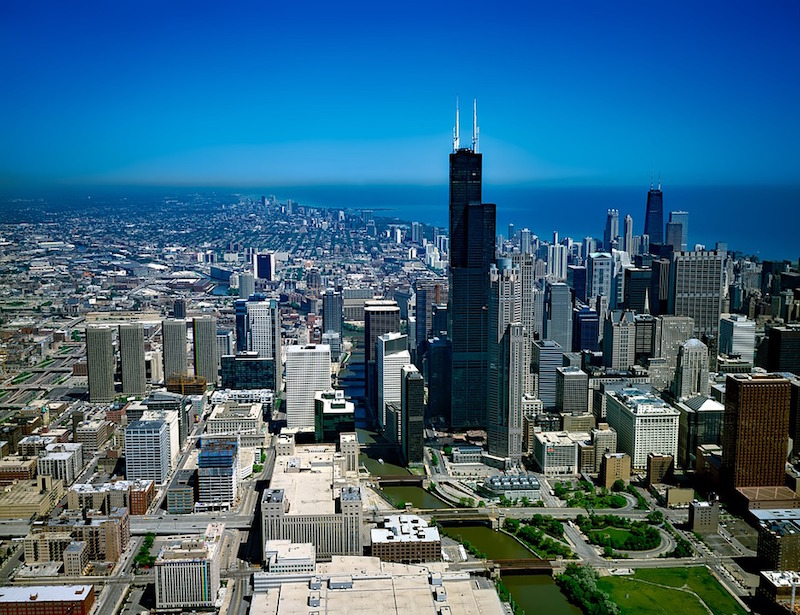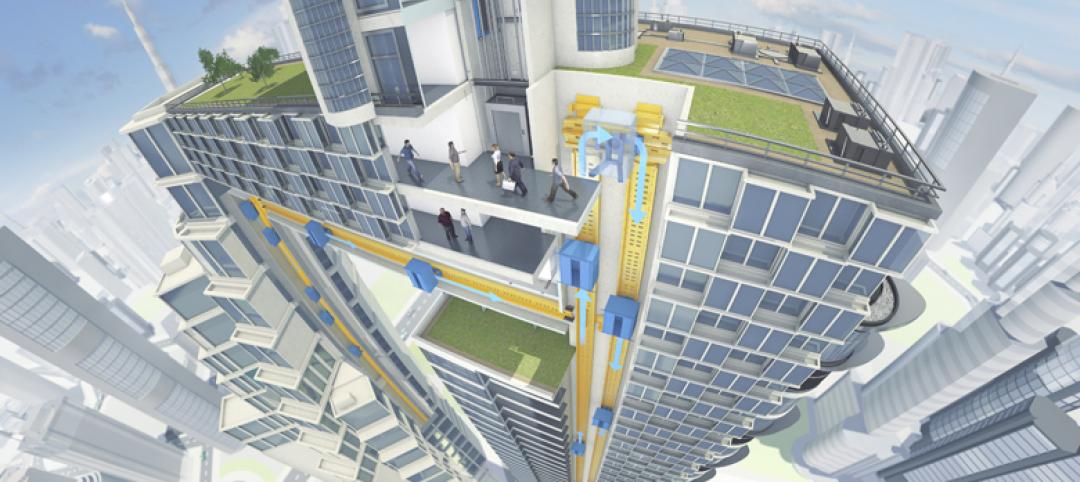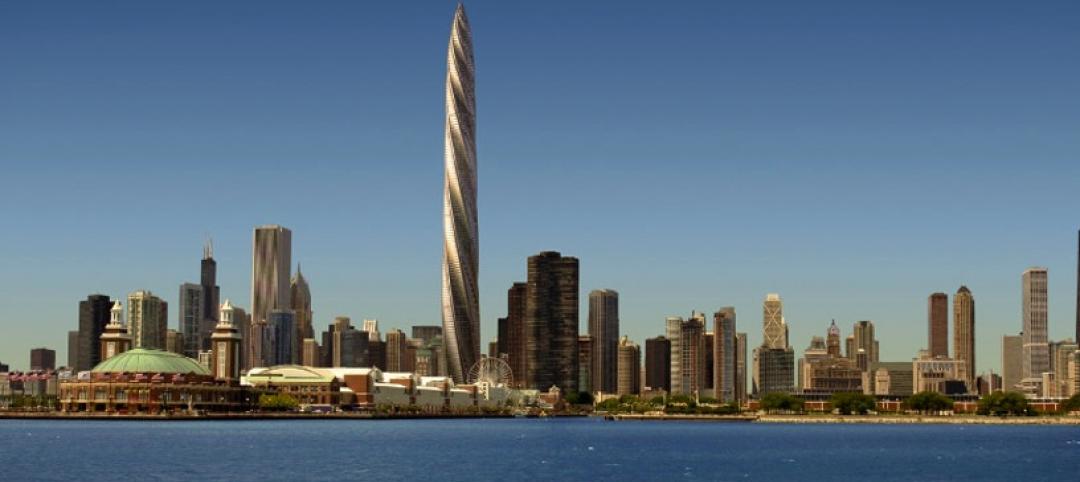The taller the building, the more prestigious it appears. At least, that’s how the thinking goes. Recently, cities around the world are beginning to use tall buildings to show off their wealth and prosperity in the same way professional athletes use garages filled with Ferraris, Aston Martins, and Lamborghinis.
Sure, tall buildings provide a way of maximizing space in crowded cities, but a report from the Council on Tall Buildings and Urban Habitat (CTBUH) points to the fact that many supertalls around the world have hundreds of feet of non-occupiable space. This “vanity height” as it is referred to, exists purely as a design element and to make the building taller.
In fact, if you eliminate vanity height, 44 of the world’s 72 supertalls (the number at the time of the report using July 2013 data) would measure less than 300 meters, losing their supertall status. The tallest of these building’s is Guangzhou’s 390-meter CITIC Plaza. Seeing these tall buildings only to realize so much of it is purely for aesthetics is like buying a large bag of chips only to discover a third of it is filled with air.
In terms of sheer height, the Burj Khalifa is the most egregious vanity height offender. 244 meters at the top of the world’s tallest tower is non-occupiable, that’s a whopping 800 feet. In other terms, if the Burj Khalifa’s vanity height were a building in its own right, it would be Europe’s 11th-tallest building.
In terms of percentage, another Dubai building is the worst offender. 39% of the Burj Al Arab’s height is non-occupiable space. However, at the opposite end of the spectrum, Dubai is also home to The Index, which has a vanity height of only four meters, or 1% of the buildings overall height.
New York has three of the worst offenders with the Bank of America Tower (131 meters, 36%), New York Times Tower (99 meters, 31%), and One World Trade Center (134 meters, 25%). The Empire State Building, however, plays the role of New York’s Index, as it loses just 1% of its height to non-occupiable space.
Measuring building height has been a fairly subjective practice over the years. Spires are counted toward height (which some view as counterproductive and rewarding vanity height) while antennae are not. In 1998, the then Sears Tower lost its title of tallest building in the world to Petronas Towers despite being almost 250 feet taller when its antennae were included and also having a higher occupiable top floor. The Petronas Towers’ spires, which are included in the building’s height, reach 1,483 feet in the air while the Sears Tower without its antennae, which are not included in its overall height, only reaches 1,454 feet. With the antennae the Sears Tower is 1,707 feet.
The now Willis Tower lost out again to vanity height in determining the tallest building in the United States. The Willis Tower’s roof is 442.1 meters high while One World Trade Center’s roof is 417 meters high. Again, however, One World Trade Center’s spire counts towards its height, bringing it up to 1,776 feet and giving it the distinction of being the tallest building in the U.S.
So what does all of this mean? Well, not much, except the list of the tallest buildings in the world would be shuffled around a bit if spires, masts, and antennae were counted toward a building’s overall height or, conversely, if buildings were just measured to their top floors.
But there really isn’t a simple solution: completely occupiable or not, the Burj Khalifa is still the tallest structure ever created (to this point. Jeddah Tower will take the title when it is completed, most likely with quite a bit of non-occupiable space of its own). But if you allow spires, antennae, or other non-occupiable components to count, then some architects and developers could add comically large elements to their structures just to get the accolade of tallest structure in the world.
Regardless, whichever way you measure it, architects are continuing to push the boundaries of what is possible in terms of building height as more tall buildings than ever are popping up in cities around the world.
Related Stories
| Dec 12, 2014
SOM names winner of One World Trade Center photo contest
Gerry Padden's winning photo offers a striking juxtaposition of the Brooklyn Bridge with the sparkling One World Trade Center tower.
| Dec 4, 2014
10 tallest buildings to be completed in 2015
This year has seen the completion of many signature tall buildings, including the One World Trade Center. CNN reports that 2015 promises to be another busy year for skyscraper construction across the globe.
High-rise Construction | Dec 1, 2014
ThyssenKrupp develops world’s first rope-free elevator system
ThyssenKrupp's latest offering, named MULTI, will allow several cabins in the same shaft to move vertically and horizontally.
| Nov 29, 2014
20 tallest towers that were never completed
Remember the Chicago Spire? What about Russia Tower? These are two of the tallest building projects that were started, but never completed, according to the Council on Tall Buildings and Urban Habitat. The CTBUH Research team offers a roundup of the top 20 stalled skyscrapers across the globe.
| Nov 24, 2014
Adrian Smith + Gordon Gill-designed crystalline tower breaks ground in southwestern China
Fitted with an LED façade, the 468-meter Greenland Tower Chengdu will act as a light sculpture for the city of Chengdu.
| Nov 24, 2014
OMA morphs Miami condo tower development plan
Initially, the design included six slim towers to be set on the Miami shoreline, but the cylinders have been nudged into pairs to form three larger towers.
| Nov 11, 2014
Renzo Piano's third building at London Bridge Quarter approved, will be built adjacent to the Shard
Renzo Piano Building Workshop has been granted planning approval for its residential building at London Bridge Quarter—a 26-story apartment tower dubbed Feilden House.
| Nov 6, 2014
Hines planning tall wood office building in Minneapolis
The Houston-based developer is planning a seven-story wood-framed office building in Minneapolis’ North Loop that will respect the neighborhood’s historic warehouse district look.
| Oct 31, 2014
Dubai plans world’s next tallest towers
Emaar Properties has unveiled plans for a new project containing two towers that will top the charts in height, making them the world’s tallest towers once completed.
| Oct 27, 2014
Studio Gang Architects designs residential tower with exoskeleton-like exterior for Miami
Jeanne Gang's design reinvents the Florida room with shaded, asymmetrical balconies.















